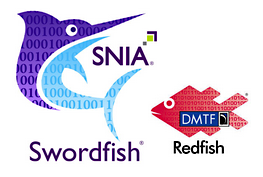 Language changes dramatically over time and the old German handwriting is vastly different than today’s print. There are plenty of historians, anthropologists, and interested families that want to learn how to understand and translate German handwriting to learn more about the past. The history of the Germanic language is interesting and says a lot about the way that people wrote. More importantly, the regional differences can provide great insight into the time and place that certain things were transcribed. The following article will provide a brief overview of older German handwriting texts.
Language changes dramatically over time and the old German handwriting is vastly different than today’s print. There are plenty of historians, anthropologists, and interested families that want to learn how to understand and translate German handwriting to learn more about the past. The history of the Germanic language is interesting and says a lot about the way that people wrote. More importantly, the regional differences can provide great insight into the time and place that certain things were transcribed. The following article will provide a brief overview of older German handwriting texts.
States and Old German Handwriting
One of the most interesting aspects of old German handwriting is that there are subtle variations from state to state. Because the German nation state was not created until very late in the 19th century, there were hundreds of years of development where the states were independent of each other. At certain times over the centuries, the states were able to come together in the Hanseatic leagues or other defense-based coalitions. However, mostly the states were independent even though they shared a common language. This naturally led to a wide variety of dialects and even handwriting variation based on regions.
Even to this day there are variations in the dialects that people speak. The south German state of Bavaria is well-known for their accented language, which can often translate into using different words and writing them differently. Anyone who is trying to decipher old German texts will find the history of the language and region very useful for these purposes. A professional German translation service can help to decipher the texts and offer a clue about the origin.
Latin and Gothic Script
Even though German tribes finally accepted Latin influence, their script looked far different than it does today. The Gothic script (also referred to as Blackletter) was the famous script used between 1150 and the 17th century. This script was re-used for ideological purposes in the Nazi German era as well, but only for a few years before changing once again.
The Gothic script can be difficult to read unless it is typed. Many typed Gothic documents are easier to read with a guide, but handwriting is nearly impossible for the average person. Even though who understand and speak German will be unable to understand the writing of individuals using old German handwriting.
This script is one of the oldest Latin scripts that exists in Germany and was used for a considerable portion of the region’s history. Even with different states, they spoke a language that was similar enough to use this font. Nonetheless, for most of the time Gothic script was being used, it was handwritten rather than typed. This naturally makes it far difficult to understand all Gothic script and recognize old texts easier.
Fraktur German Script
After the Gothic era comes a period with the Fraktur script. Even though it was similar to the Gothic style, there were some variations. It is also a very important script to learn as it was used between the 16th and 20th centuries. Most of the records for ancestry or other historic information were recorded in that period. While plenty of records exist from the 20th century after Fraktur was largely abandoned, the oldest and most pristine documents are often written in Fraktur.
The Fraktur writing style gained popularity in many of the German states, but other lands as well. Although the Austrians used German Fraktur script, their entire empire and sphere of influence started to use it as well. People looking for old German handwriting translations might have descendants who came from Czech Republic, Poland, or Slovakia rather than a German state. Even countries as far as Estonia and Scandinavia were using Fraktur typeface in order to record things.
Typing was introduced around the period when people moved to Fraktur so there is a lot of typed documents that are easier to read and verify. Nonetheless, the handwriting is still difficult for many experts to pinpoint.
Introduction of Sütterlin
For many people who are viewing historical documents or family papers, it is important to note the introduction of the Sütterlin script. People from around the German states started to use this script when it was created and standardized by Prussians in the early 20th century. This old German handwriting can be deciphered relatively easily compared to the variation in Gothic and Fraktur scripts.
The handwriting is one of the most organized as it was created for military regulations. These days, there are many documents for ancestry purposes that are written in the Sütterlin script. After the First World War and the hyperinflation that occurred in German speaking areas afterwards, hundreds of thousands of immigrants fled to other parts of the world.
Many of them ended up in new lands and developed new cultures. However, the descendants of these German immigrants have found a new interest in the ancestry of their relatives. By using the best techniques, professionals can decipher the Sütterlin text and provide the best possible support to interested parties.
Translating Old German Handwriting
Professionals who have spent time in archives or focus on handwriting and German language can decipher much of the text found today. There are few documents that are written in a way that cannot be read by anyone, but the knowledge that many people have in this field is breathtaking.
For people who are genuinely interested in their own history and culture, having someone help with German writing translation can be a tremendous step in the right direction. Ancestry papers and letters are often written in another language once the advent of mass transportation was so easy to utilize.
With an understanding of the different old German handwriting scripts, you may even be able to understand a bit of the information for yourself. It is a great challenge to learn how to read the handwriting of relatives or historic texts, but for a full understanding it is best to seek the help of trained experts like us at Metascriptum.














